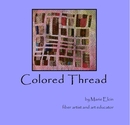I'm sure we were given an intro to topology during our lecture week because it helps consider networks as something to be analyzed independent of physical space. To think about connections and networks in the brain, you might need to pull them out of their tightly clustered physical confines and examine them simply in terms of numbers. But the concepts of topology itself blew my mind! I'm accustomed to the middle school level of geometry and understanding the structures of cubes etc in physical space. Imagine being able to stretch apart the vertices however far necessary to just look at the structure of vertices connected by edges. The visual possibilities sparked my curiosity.
On the way home on the last day of our lectures I happened upon the overflowing dumpster outside of the School of Design. Among the discarded sculptures I found a little model of a tetradecahedron made of thin cardboard. It seemed such a perfect little model of the math ideas we'd heard about over the week. I was reminded of Joseph Kosuth's One and Three Chairs piece, and so I painted the cardboard form in a complementary gradation, painted a geometric version of it unfolded, painted a topological version of it stretched out, and painted its definition. They are all visualizations of the same object. They all represent a tetradecahedron (or cuboctahedron). Which version would allow someone to understand the object best? Do you need to know what something is in physical space? Would a definition provide enough information? If you saw it topologically would you make the jump to geometry easily?
I think where I am going with this is that this is why we are involved in this internship at Penn. There is more than one way to understand information- and maybe you can't fully comprehend a science until you look at the information backwards, forwards, flattened, stretched, and insideout.






No comments:
Post a Comment